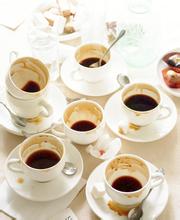Introduction to the Export and sales of Colombian Coffee Lazmus Manor
Colombia is one of the most important coffee exporters in the world. According to the statistics of the International Coffee Organization, Colombian coffee exports accounted for an average of 17% of the world's total coffee exports in 1991 and 1996, second only to Brazil (24% of the world's total exports). In 1998, the total coffee exports of the member states of the organization were 79.5 million bags, of which Brazil accounted for 22.9%, Colombia accounted for 14.2%, and Vietnam accounted for 8.1%. In 1999, the total export volume of the member states of the International Coffee Organization was 85 million bags, and the proportion of Brazil increased to 27.1%. Colombia dropped to 11.7% and Vietnam increased to 9%. In 2001, the total global coffee export volume was 89.7 million bags, of which Brazil accounted for 26.2%, Vietnam 15.8% and Colombia 11.1%. According to preliminary statistics, Colombia's export volume surpassed Vietnam in 2002 and rebounded to the second place in the ranking of coffee exporters.
Colombia coffee is mainly exported, and domestic consumption accounts for a small proportion. In 1998 and 1999, domestic consumption was 1.5 million bags, accounting for 11.5% and 16% of the total output, respectively. In 2001, domestic consumption was 1.6 million bags. In 1991, the export volume of Colombian coffee reached 15.46 million bags. Due to the decrease in planting area and other reasons, the export volume of Colombian coffee in recent years has declined compared with that in the early 1990s. The export volume was 10.29 million bags in 1999, only 9.04 million bags in 2000, and slightly increased to 9.44 million bags in 2001. Colombia coffee exports are mainly coffee beans, coffee bean exports account for about 94% of the total exports, and the export volume of new varieties of coffee increased greatly in 2001. Colombia coffee is mainly exported to countries such as the United States, Germany, Japan, Belgium, France, Canada, the Netherlands, Sweden, Spain and so on.
The United States is the largest export market for Colombian coffee, and coffee exports to the United States have increased year by year in recent years. In 1998, 2.85 million bags were exported to the United States, accounting for 26.2 percent of the total export volume. In 1999, exports to the United States accounted for 31.3 percent of the total coffee exports, 32.5 percent in 2000 and 31.2 percent in 2001. The proportion of exports to Germany fell from 23.6% in 1998 to 19.0% in 2001, but Germany is still the largest export market for Colombian coffee in Europe. Exports to Japan also account for more than 10% of Colombia's total coffee exports.
In 2001, Colombia exported 3.52 million bags of coffee to American countries, accounting for 37.2% of the total export volume, 4.12 million bags to EU member states, accounting for 47.1% of the total export volume, and 1.22 million bags to Japan, accounting for 12.9% of the total export volume. Exports to South Korea and Australia are 120000 bags and 30, 000 bags respectively

Important Notice :
前街咖啡 FrontStreet Coffee has moved to new addredd:
FrontStreet Coffee Address: 315,Donghua East Road,GuangZhou
Tel:020 38364473
- Prev

Introduction to Esmeralda Manor in Panama Rosa Coffee Manor
The market for Panama coffee: the first batch of Panamanian coffee exported each year starts in November, and almost all high-quality coffee beans are shipped to France and Finland. Generally speaking, the price of Panamanian coffee belongs to the low and medium price, but its performance in the cup is often as good as that of any famous or even expensive coffee producing area. The selling price of Panamanian special coffee in the international market
- Next

An introduction to the coffee producing area of Caesar Louis Manor in Panama with obvious sour taste.
La Esmeralda Manor was bought by Price Peterson's father, Rudolph A. Peterson, a Swedish banker. He was the president of Bank of America and was a big shot in the financial circle at that time. Rudolph bought Hacienda La Esmeralda only for vacation and later retirement. It should not have been expected that the estate would become world-famous and even become a Panamanian boutique coffee.
Related
- Does Rose Summer choose Blue, Green or Red? Detailed explanation of Rose Summer Coffee plots and Classification in Panamanian Jade Manor
- What is the difference between the origin, producing area, processing plant, cooperative and manor of coffee beans?
- How fine does the espresso powder fit? how to grind the espresso?
- Sca coffee roasting degree color card coffee roasting degree 8 roasting color values what do you mean?
- The practice of lattes: how to make lattes at home
- Introduction to Indonesian Fine Coffee beans-- Java Coffee producing area of Indonesian Arabica Coffee
- How much will the flavor of light and medium roasted rose summer be expressed? What baking level is rose summer suitable for?
- Introduction to the characteristics of washing, sun-drying or wet-planing coffee commonly used in Mantenin, Indonesia
- Price characteristics of Arabica Coffee Bean Starbucks introduction to Manning Coffee Bean Taste producing area Variety Manor
- What is the authentic Yega flavor? What are the flavor characteristics of the really excellent Yejasuffi coffee beans?

